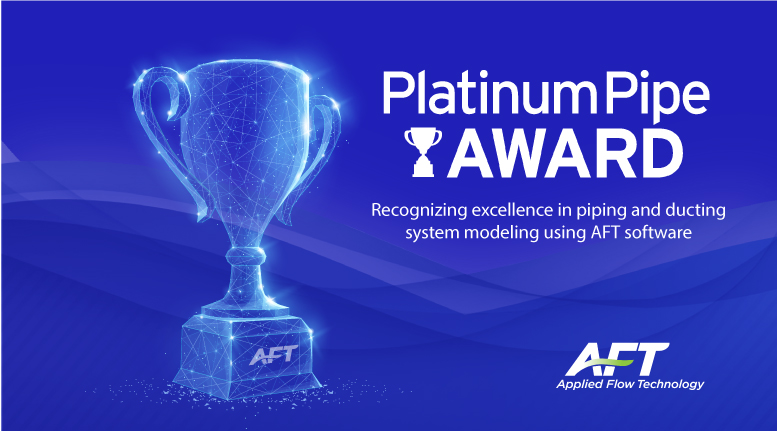AFT Blog
AFT Fathom and AFT Arrow both have the powerful ability to model heat transfer in pipes and heat exchangers, allowing you to represent these critical features of temperature-sensitive systems in your hydraulic model. However, without being able to see the affect heat transfer has on an entire system these features would be of limited usefulness. One of the most powerful aspects of AFT’s implementation of heat transfer is that energy is balanced across the entire system. For example, you can observe changes in pump or control valve operation when adding heat transfer to a remote part of a system. Looking at...
It was an honor to visit our friends in Beijing, China to provide our Channel Partner, AECsoft Engineering Software (AECSOFT), two days of complimentary workshops. During these workshops, attendees had a hands-on experience with AFT Software as well the opportunity to discuss relevant hydraulic topics. Each attendee also received a 15-day free trial license to review topics discussed in the workshop. The first workshop, held August 21-22, hosted 65 attendees from twenty-nine companies. The workshop focused heavily on technical orientation to the AFT software. The second workshop, held August 24-25, was dedicated exclusively to the biggest state...
There are many (six!) ways to define a pump transient event in AFT Impulse. This gives you great flexibility in creating a model that behaves the way you want it to. One thing true for all pumps is that they must be started at least once. Pump startups often cause significant transient effects on the system so you may wish to model this with AFT Impulse. Even narrowing your pump transient down to a startup, there are still four models left to choose from: Without InertiaStartup With Inertia and No Back Flow or Reverse SpeedStartup With Inertia - Four Quadrant, Known...
To define any transient event in AFT Impulse or AFT Fathom XTS the application must know when it begins. To do so, the user should know how time and event logic is approached in AFT’s transient solvers. In this article, we will discuss the three different time bases used in the applications, the selection of a single or repeating event, and the many possible triggering events that can start the user defined transient. The user defines these items in the Initiation of Transient section of the junction’s Transient tab. The requirements for each junction can vary, but the general approach applies...
In AFT Fathom and AFT Impulse, it is possible to model a submerged pump where a short and possibly frictionless suction pipe for the pump’s inlet does not need to be modeled. When modeling a submerged pump, there are two options available for specifying the system inlet boundary condition at the pump suction. As shown in Figure 1 below, the Submerged Pump’s Suction Pressure can either be specified as “Head (HGL)” or “Pressure”. Modeling a submerged pump is not the only time where the “Head (HGL)” or “Pressure” choices will arise. If an Exit Valve (i.e., a valve that discharges...
AFT Fathom can easily generate a pump and system curve for your piping system. Creating a pump and system curve for a simple system with a single flow path and no control features is an easy and typically well-understood process. However, as piping systems are quite complicated with lots of branch points, control features, and dynamic interactions, creating a useful system curve can quickly become a common source of confusion. This three-part blog series is going to help clarify concepts regarding pump and system curves to better understand them. This Part 1 blog will discuss the basics of what pump...
Have you ever finished running an AFT Impulse model and then received the following Warning message shown in Figure 1 and then wondered what it means? During a waterhammer analysis, the flowrates are constantly changing all throughout the system, therefore, the velocities and Reynold's numbers are also constantly changing. The friction factors will also be constantly changing during the transient. By default, AFT Impulse will use the friction factors that are obtained during the steady-state analysis and then use the same friction factors during the transient and they will be assumed to remain constant. Since it is possible for the flowrates...


